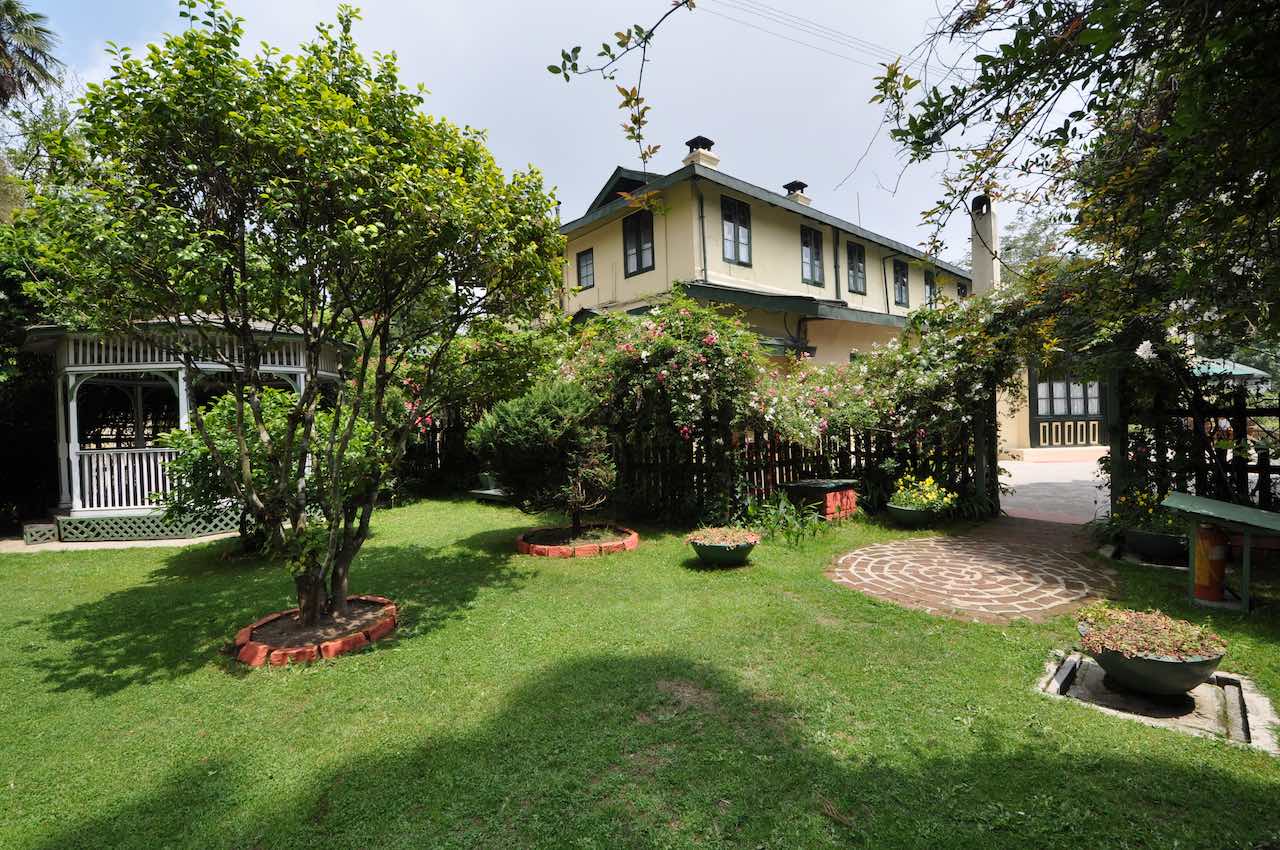This former Victorian boarding house, once the haunt of English and Scottish tea planters looking to make their fortune from Darjeeling tea, was once described as ‘one of the three jewels of the Raj’. The best-located hotel in the Himalayas, sitting atop the aptly-named Observatory Hill, Windamere Hotel has won many awards including one from an Indian Prime Minister in recognition of its commitment to the preservation of Indian heritage.
There are now no suited British tea planters relaxing in the enclosed garden sipping first flush Darjeeling tea from china cups. Today, the chimes of bells from the nearby Buddhist temple echo between the shrubs and trees in the relaxing garden. Travellers relax in front of crackling coal fires in the quaint lounge and savour tasty food in the old-style dining room.
The hotel is surprisingly large, more so than it seems when you arrive through the gates and are welcomed in both Tibetan and Hindu traditions, a red bindi dotted on the forehead and a white khata ceremonial shawl placed around your neck.
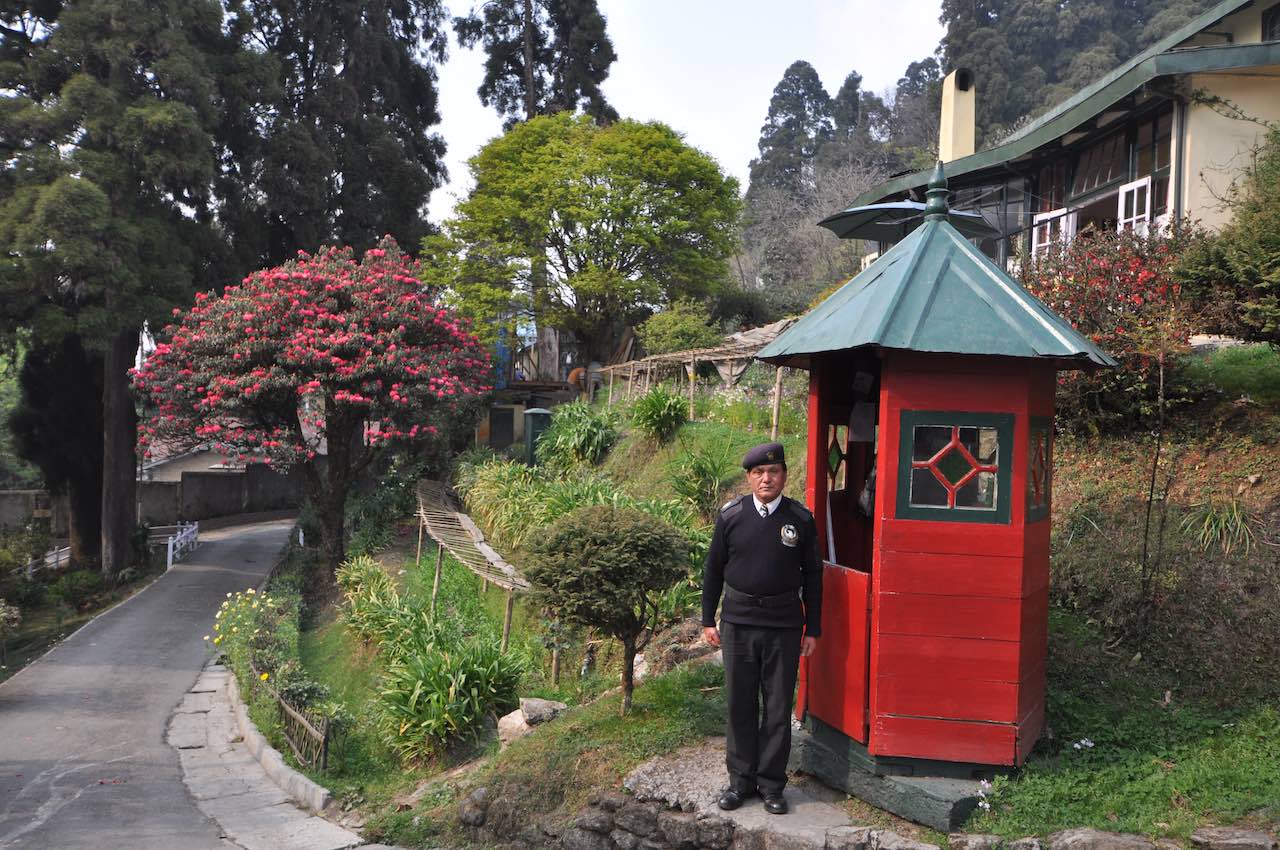
Entrance to Windamere (c) Joe Worthington
Every part of this hotel reminds you of a golden era, when Brits, dressed in the finest suits and top hats, floral dresses and silken gloves wandered the streets of Darjeeling. A time when the Darjeeling Himalayan Railway steam locomotive transported groups of well-to-do civil servants escaping from the heat of Calcutta, and when groups of planters sat down each morning, noon and dinner for a fine dining experience in the on-site dining room.
The Grande dame of Darjeeling and former owner of the hotel, Madame Tenduf-La, would be proud of the way that the hotel is working to preserve the past and she is talked of fondly by current British-Canadian Director Ms Elizabeth Clarke.
Who For?
For those looking to reminisce about the past or anyone looking to get away from it all in the Himalayan foothills, The Windamere is ideal.
Accommodation
The hotel is divided across several cottages, villas and the central house. The Ada Villa, which was built in the 1880s, is the main building in the property and the most impressive.

Ada Villa – looking towards the terrace (c) Joe Worthington
Each suite in the building is named after a notable former guest, the Begum Aga Khan,
Chogyal of Sikkim, Prince Peter of Greece & Denmark, Princess of Siam, Viscount
Knebworth and Alexandra David Neal. Each royal suite is furnished with the finest period dark oak wardrobes, cabinets, sofas and beds, luxurious materials, a real coal fire that leaves a soothing old-world smell on your clothes, Victorian roll-top bathtubs in the bathrooms and framed maps, photos and old documents on the walls.
Set on the terrace is the Little Peppers cottage, a self-enclosed cottage with its own sitting room, bedroom, dressing room and bathroom. What makes this cottage stand out is its uninterrupted views of the Himalayan mountains, spectacular as the sun rises in a morning and sets at night.
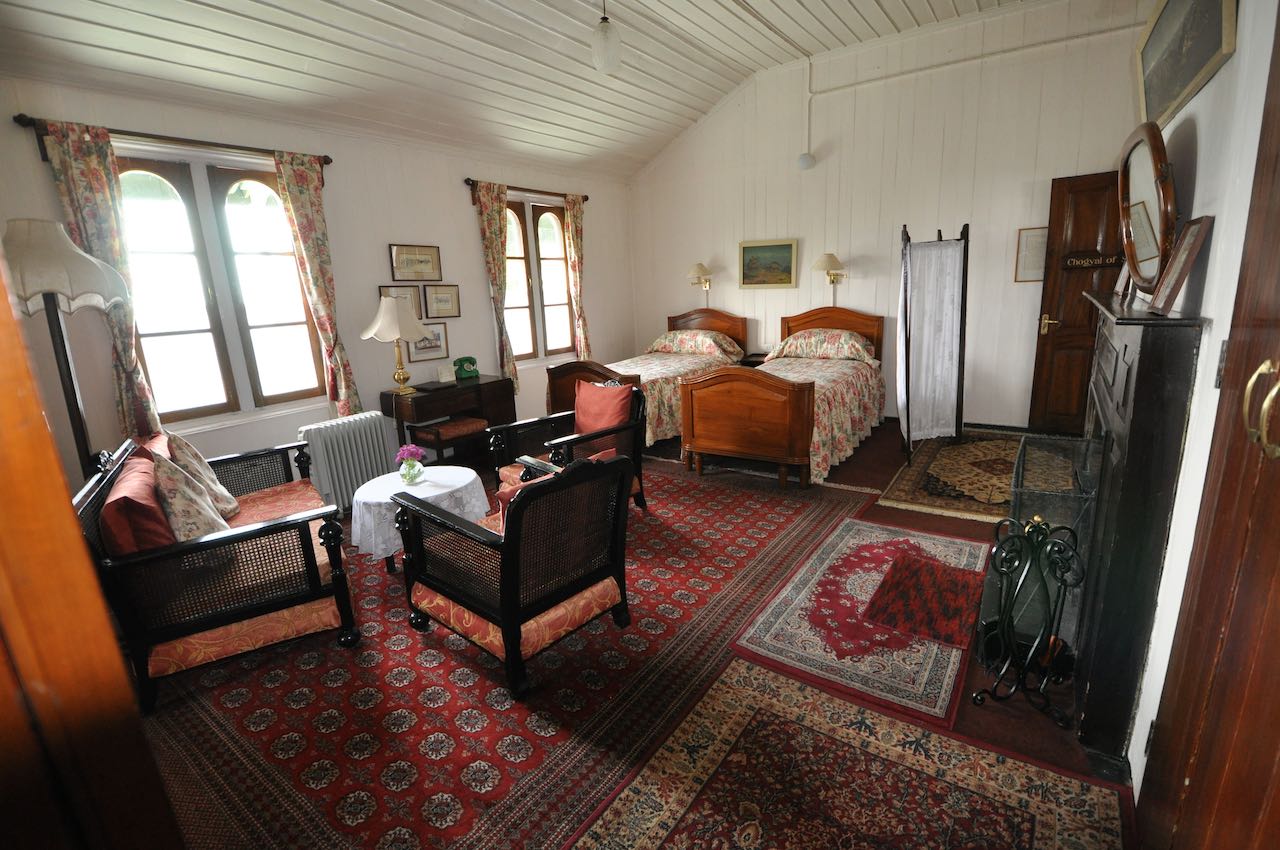
Colonial Suite – The Chogyal of Sikkim (c) Joe Worthington
Tinkerbelle’s Cottage, located a few metres up Observatory Hill and set back from the main property, is self-enclosed with its own gate, security guard, enclosed garden and bedroom, two bathrooms, lounge with polished wooden floors covered with Indian and Tibetan area rugs, upholstered sofas, a kitchen with dining room table, flat screen TVs, and a dedicated maid and butler service if desired. This is an option for families looking for extra privacy or those who want to push the boat out and experience a real home away from home within viewing distance of Kanchenjunga mountain (the third tallest mountain in the Himalayas).
The Forget-me-Not is a semi-circular suite located under the dining room, with its own small private garden overlooking Darjeeling and the Himalayas, cosy lounge, bedroom and bathroom. Scattered throughout the property, the single colonial rooms are much like the suites but smaller, and the annexe is a cluster of colonial suites with double or single bedrooms, Victorian bathrooms and some with dressing rooms.
Facilities
There is a walled garden at the rear of the property, with wooden benches, countless endemic trees and shrubs of every size and colour, and silence save for the occasional ringing of bells chiming through the chilly mountain air. The grounds of the hotel are perfect for early morning strolls as there are endless viewing spots overlooking Darjeeling and the Himalayas to discover.
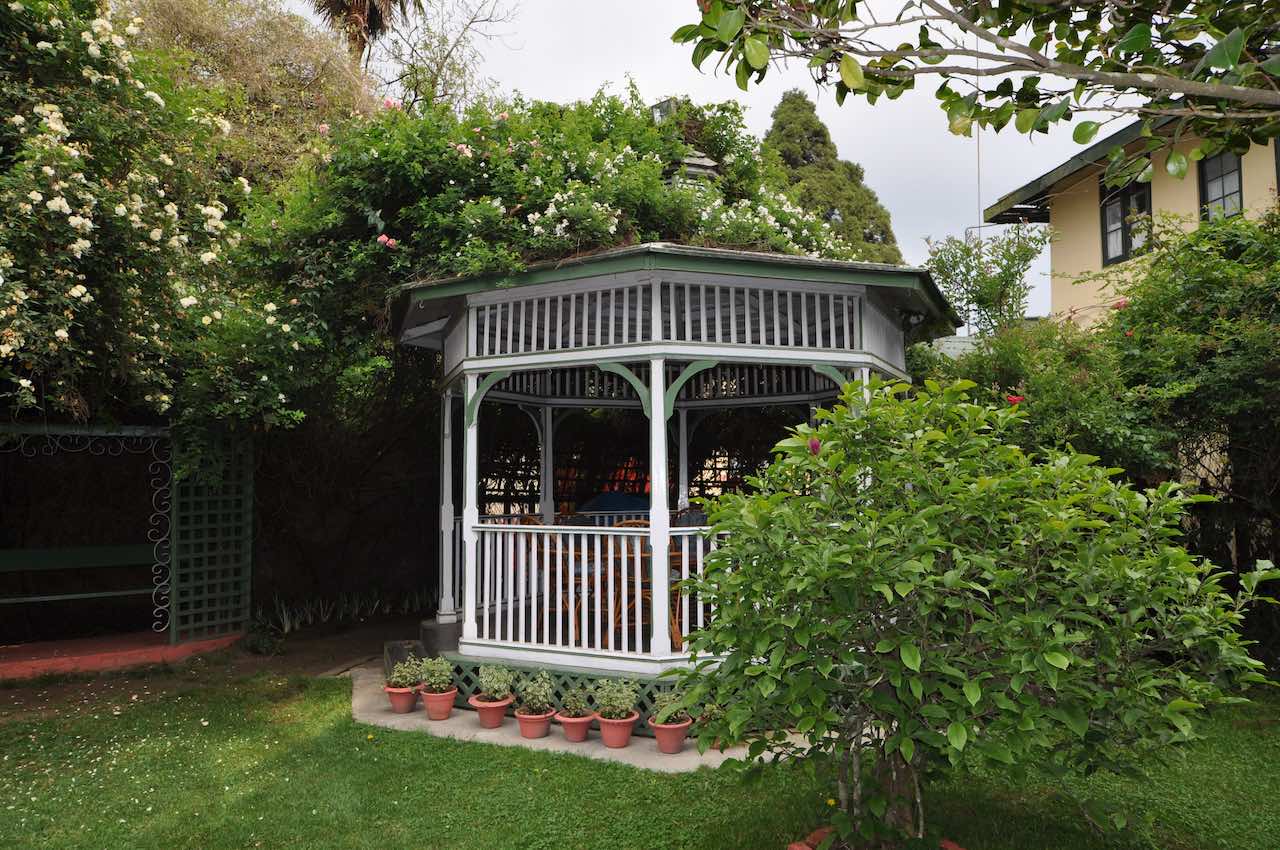
Windamere Hotel – A quiet place (c) Joe Worthington
The DHR Club (‘Darjeeling Himalayan Railway’) is a two-roomed bungalow popular with toy train enthusiasts the world over. The Lowell Thomas Reading Room (named after a
lifelong friend of the hotel, the broadcaster who gave T.E. Lawrence the name “Lawrence of Arabia”) is a place to sit and read an old book from the extensive library in front of a roaring coal fire with a cup of local tea or a pink gin. The Heinrich Harrer room (the real Seven Years in Tibet character, played by Brad Pitt in the film) is another great place to sit and relax or host a meeting or small party.
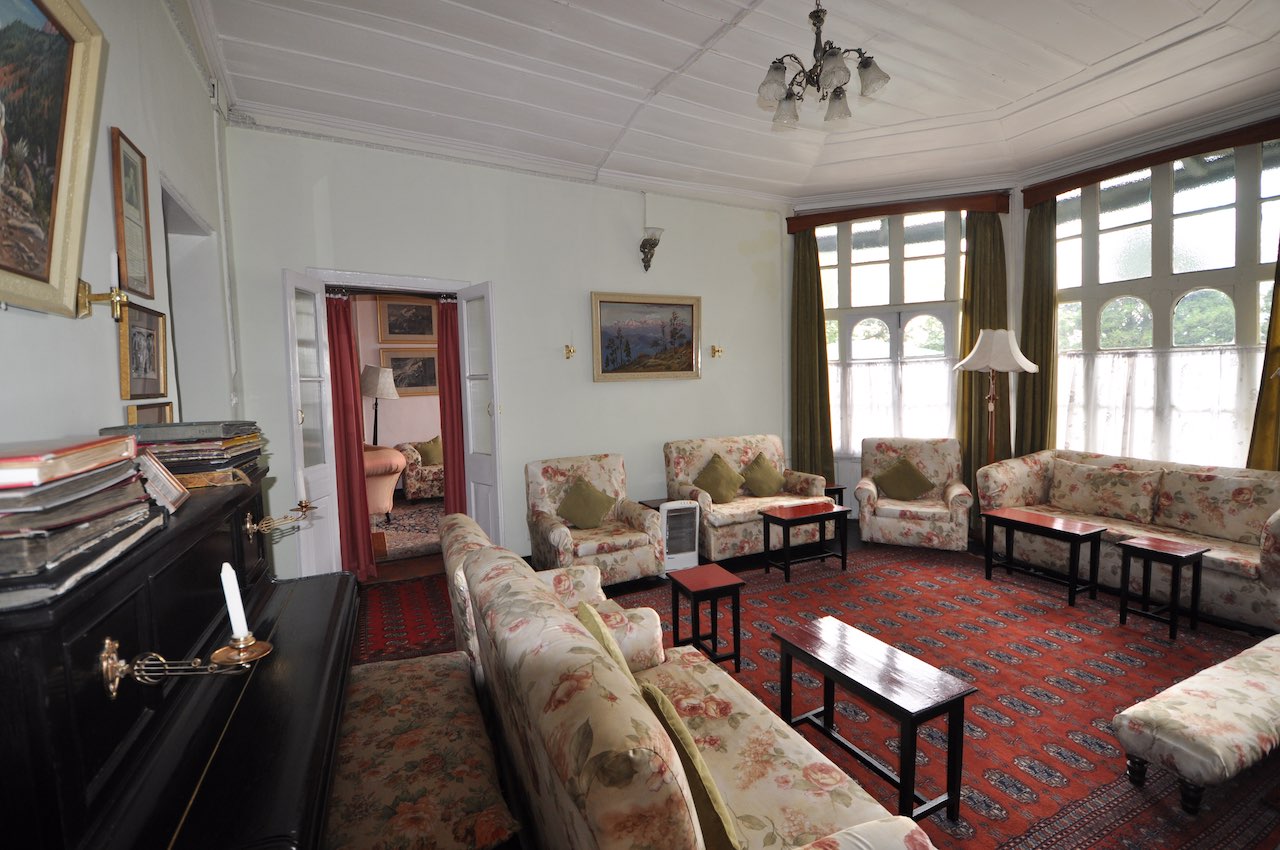
Sitting Room (c) Joe Worthington
The Bearpark’s Parlour, a sitting room where afternoon tea and cakes are served is decorated in the Windamere’s typical colonial style, but the pièce de résistance of the property has to be Daisy’s Music Room, a quaint pre-war decorated sitting room with a coal fire, comfortable sofas, and an endless supply of photo books documenting the long history of The Windamere and the famous Christmas parties that they host every year.
Food and Drink
Freshly brewed Darjeeling tea is available at any time during the day at the hotel, as are alcoholic beverages in the 1930s The Windamere Bar, a small lounge bar area with sofas, a traditional wooden bar with stools, historic photos on the walls.
Dining in Darjeeling doesn’t come any better, or fancier, than in the on-site dining room.
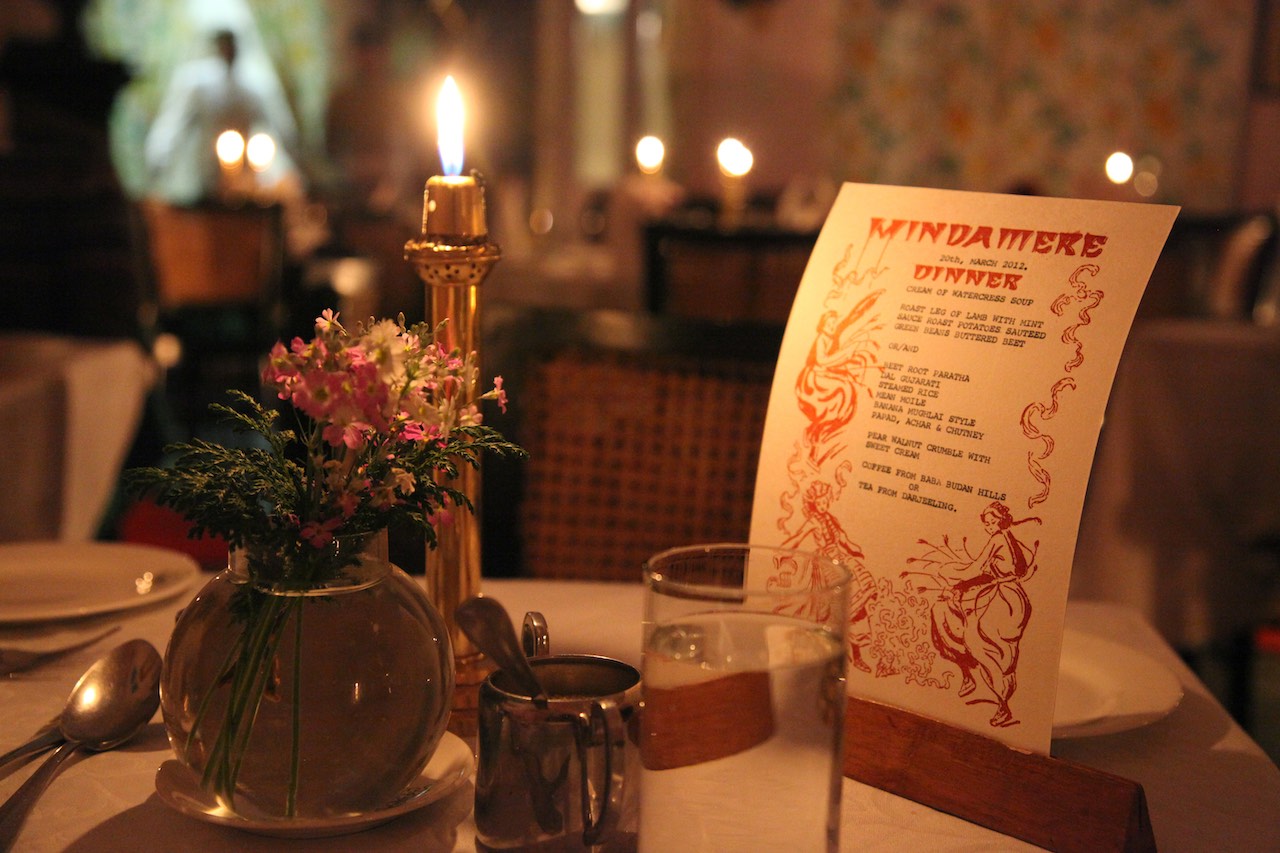
Dinner (c) Joe Worthington
With breakfast and either a lunch or dinner provided in the room rates, every guest will enjoy the five-course silver platter dining experience twice a day. The lunch and dinner menus change daily, with a rotating Indian-meets-continental menu of four dishes and tea or coffee to wash it all down.
At dinner, flickering candle light and the soothing scent of coal smoke combine to transport guests back to the colonial times. Dishes are served by impeccably-dressed local waiting staff on silver platters and the menus are printed on souvenir cards in the centre of the cloth-coated tables. One day could bring a starter of a variation on tomato soup, followed by a plate of fish and chips, then a dish of chicken curry with rice and assorted vegetables, with jam roly poly to follow. Other days could see you savouring Indian specialities such as dhosas, lentil dhal, or makhani, paired with cheese and onion pie or beef stew and an Eton mess for dessert.
You never know what dishes might appear on the menu for your next meal, but you won’t find pairings like these in such a memorable setting, complete with calming 1940s music playing in the background, anywhere else.
What’s Nearby?

Mount Kanchenjunga – Darjeeling town (c) Joe Worthington
Central Darjeeling is just steps from the hotel grounds, complete with its toy steam train, countless small tea shops, local restaurants and historic colonial buildings (including the former post office). A short uphill stroll from the hotel is a Tibetan monastery complex, and a larger one a short drive from the hotel. There are countless tea plantations worth visiting just a short drive downhill from The Windamere.
READ ALSO: 48 hours in Darjeeling, West Bengal, India
Is Wi-Fi Available?
Yes, throughout the hotel.
How much:
Preferred Single Rooms from INR 11,000 (+GST), Royal Suites from INR 16,000 (+GST) and cottages start at INR 14,500 (+GST). Breakfast and one substantial meal is included in the price.
Booking.com
(function(d, sc, u) {
var s = d.createElement(sc), p = d.getElementsByTagName(sc)[0];
s.type = ‘text/javascript’;
s.async = true;
s.src = u + ‘?v=’ + (+new Date());
p.parentNode.insertBefore(s,p);
})(document, ‘script’, ‘//aff.bstatic.com/static/affiliate_base/js/flexiproduct.js’);
Getting There
Darjeeling is a 3-hour drive from Bagdogra Airport, with connections via Jet Airways to Delhi and IndiGo to Kolkata. Transfers from the airport can be arranged by the hotel.
Source : https://www.thetravelmagazine.net/review-windamere-hotel-darjeeling-west-bengal-india/

